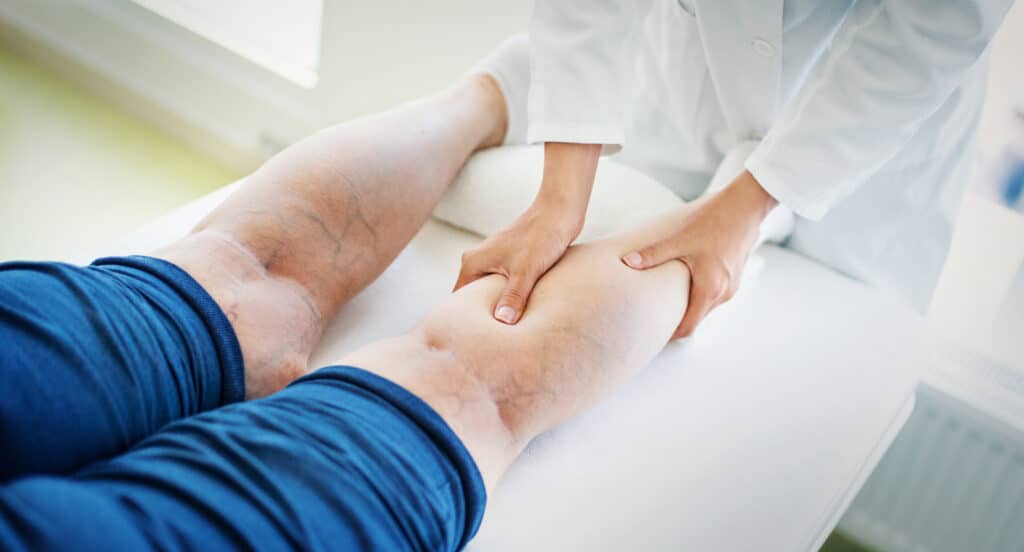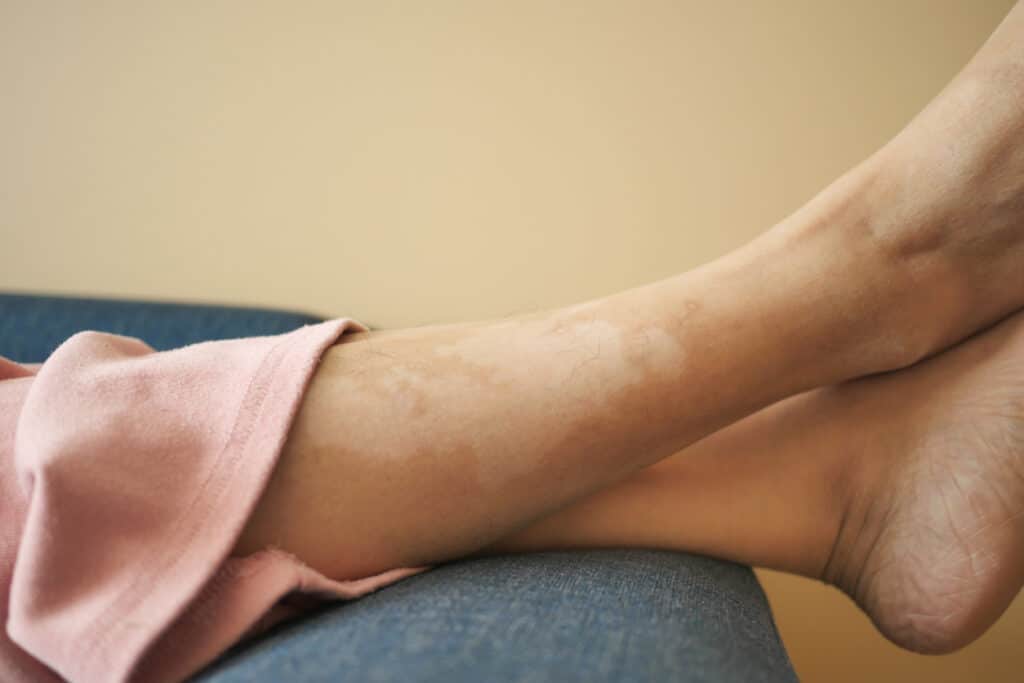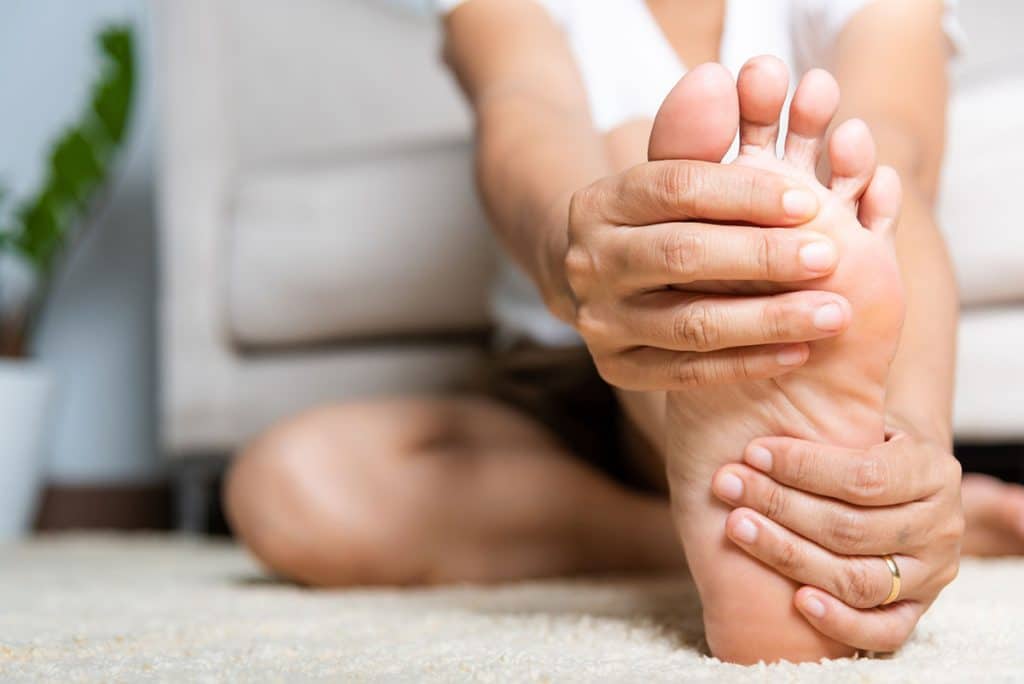If you’ve been experiencing pins and needles in the lower half of your body, this warning sign is a common symptom of poor circulation. Not only are these sensations uncomfortable, but they can also be scary!
Unfortunately, it’s easy to take our circulatory systems for granted. That’s not always the best policy, however. When something goes wrong, we should always pay attention to what our body is trying to tell us as a forewarning of a potential health disaster. Generally, a stressed cardiovascular system contributes to poor circulation and the myriad of severe health issues that result from this condition.
One of these severe circulatory conditions that you should never ignore is Peripheral Arterial Disease.
What Is Peripheral Arterial Disease?
Peripheral arterial disease (PAD), also referred to as peripheral vascular disease (PVD,) is a progressive disorder. Without treatment or taking proactive steps to manage it, the disease advances over time, resulting in spasms, blocking, or narrowing blood vessels.
While this disorder can potentially affect any blood vessel, people with PVD most commonly notice symptoms in their lower trunk, including their legs and feet.
Smokers, ex-smokers, and those with diabetes, hypertension, and chronic kidney disease are more susceptible to developing the disorder than people who aren’t experiencing these health and lifestyle factors.
Symptoms of Peripheral Arterial Disease
Approximately half the people diagnosed with the peripheral arterial disease are symptom-free. For those experiencing symptoms of peripheral arterial disease, the most common first symptom is intermittent claudication in the calf (leg discomfort described as painful cramping that occurs with exercise and is relieved by rest). During rest, the muscles need less blood flow, so the pain disappears. It may occur in one or both legs depending on the location of the clogged or narrowed artery.
Other symptoms of peripheral arterial disease may include:
- changes in the skin, including decreased skin temperature, or thin, brittle shiny skin on the legs and feet
- diminished pulses in the legs and the feet
- gangrene (dead tissue due to lack of blood flow)
- hair loss on the legs
- impotence
- non-healing wounds over pressure points, such as heels or ankles
- numbness, weakness, or heaviness in muscles
- pain (described as burning or aching) at rest, commonly in the toes and at night while lying flat
- pallor (paleness) when the legs are elevated
- reddish-blue discoloration of the extremities
- restricted mobility
- severe pain
- thickened, opaque toenails
Common Complications Associated With Peripheral Arterial Disease
If you currently have any tingling or numbness in your lower limbs not attributed to temporary restrictions, such as sleeping wrong, wearing restrictive clothing, or sitting too long, getting screened for Peripheral Arterial Disease is a smart idea. The complications of this disease can alter or threaten your life as you know it, so act fast if you notice these signs.
Let’s now consider a few of the most common complications that can arise if the condition is left undiagnosed or untreated.
Amputation – Advanced cases of peripheral arterial disease creates harmful deposits of plaque in the walls of arteries. This excessive buildup can contribute to blockages, decreasing circulation, and reduced blood flow to limbs or extremities. Those with both diabetes and PAD are at high risk of needing amputation.
Lower Quality Of Life – Another significant complication of patients who suffer from PAD is a lower overall quality of life. Depending on lifestyle habits and how far the condition has advanced, symptoms can include severe pain in the affected extremities and limited mobility that prevent you from living the life you want.
Impaired Healing – When PAD compromises your circulatory system, it’s harder for sores and wounds to heal. People diagnosed with peripheral arterial disease must often receive special care to heal any injuries because of their lowered ability to combat infections.
Risk Of Stroke – People with PAD are almost three times as likely to have a potentially life-threatening or life-altering stroke. Some of the health problems that could arise after a stroke include general weakness, speech problems, paralysis, pain, burning, numbness, balance, and walking problems.
According to industry data, about 15% of people who have a stroke die shortly after. 10% of stroke victims make a near-complete recovery, and another 10% require long-term or nursing home care. Roughly 25% of stroke survivors have minor impairments, while 40% are left moderately severely impaired with some special care requirements. As these numbers imply, strokes are a severe health issue, and seeking professional care after having one is always smart.
Peripheral Arterial Disease Treatment In Houston, Texas
Luckily, proactive healthcare can help you to minimize some of the risks and symptoms of PAD. If you’re a Greater Houston resident who’s experiencing numbness or tingling in your legs, please schedule a consultation with Dr. Ayar of Coastal Vascular Center today.




